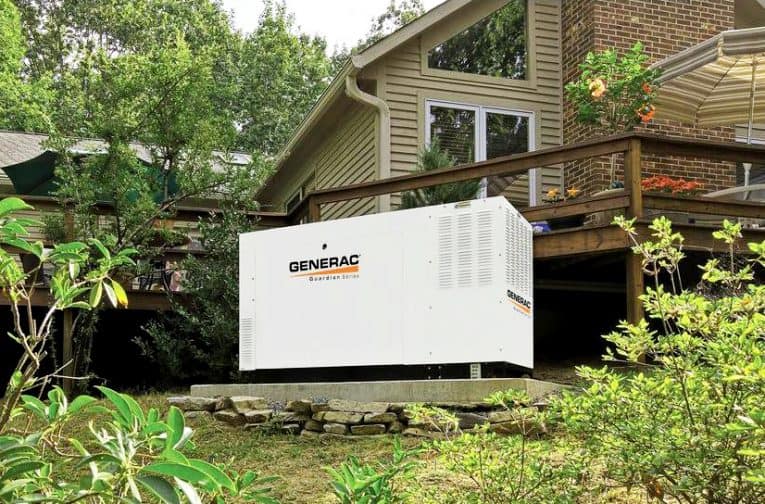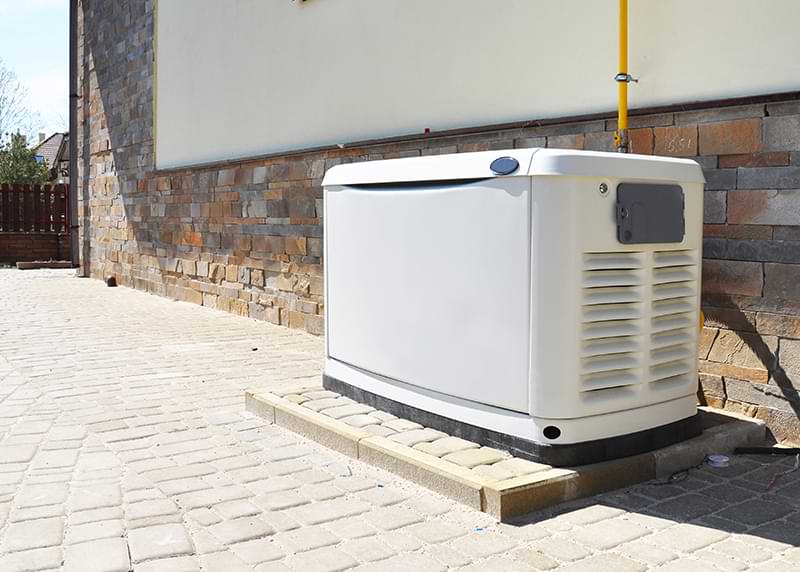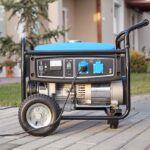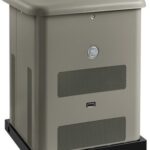Expert advice on how to properly size a standby generator so it will provide the needed electricity for your home in the event of a power outage.
There’s a bright flash of lightning, a loud clap of thunder and then suddenly, darkness. The power is out, the silence is deafening, and there’s nothing to do but sit and wait.
Power outages are unavoidable, indiscriminate, and increasing in both frequency and duration. Not surprisingly, almost 60 percent of all blackouts are caused by violent storms. What is surprising is that equipment failure is responsible for 34 percent of outages, due mostly to the nation’s aging and overloaded electrical grid.
Regardless of the reasons, power outages are inevitable, but that doesn’t mean you must accept them. Step out of the darkness and into the light—quite literally—with a standby generator.
These miraculous machines are essentially your own personal electrical power source. Within seconds of a blackout, a standby generator will automatically kick on to power your home’s electrical circuits. In fact, you might not even know an outage has occurred.
Here’s how to determine the right size standby generator for your home and what to expect when you call an electrician to discuss generators. For more about standby generators, also see Standby Generators & UPS Backup Batteries.
Sizing a Standby Generator
Generators, like homes, come in a lot of different sizes. The larger the generator, the more power it provides. Of course, large-capacity generators also cost considerably more than smaller models. That might seem obvious, but I mention it because you don’t necessarily have to purchase a whole-house generator to power your house.
You can opt for a smaller generator that is sized to run a few of the essential circuits, such as those connected to the furnace, kitchen appliances, well pump, water heater, security system, garage-door opener and a few lights and outlets. These installations are referred to as “partial-house generators.”
House size is just one criterion for selecting a standby generator. The complexity of the home’s electrical system also plays an important role, especially if it has central air conditioning.
Sizing generators isn’t as simple as looking at the home’s number of square feet. Though we will cover the basics here, an electrician will calculate your home’s anticipated electrical loads and help you choose the right generator.
Standby generators are sized by kilowatts (kW), which is a unit of power. One kilowatt equals 1,000 watts. Therefore, a 22kW generator produces 22 kilowatts—or 22,000 watts—of electrical power.
Each generator must also be matched to an automatic transfer switch (ATS), which serves as the brains of the standby-power system. It tells the generator when to kick on and turn off. Again, the electrician will provide guidance here, but typically if the generator is connected to a 200-amp breaker panel, then a 200-amp ATS is required. If your home has a 100-amp panel, you’ll need a 100-amp ATS.
Ultimately the generator size will be based on the total running watts and starting KVA of all the circuits, appliances, and mechanical systems connected to the generator. Both of these numbers must be calculated.
- KVA is simply 1,000 volt-amps. A volt is electrical pressure, an amp is electrical current. Starting KVA is required because each time an electrical motor starts up, there’s an extra electrical surge that the generator must be able to handle.
- Running watts represent the power consumed by an electrical motor while running normally.
Once the standby electrical circuits have been identified, the electrician can add up all the running watts and starting KVA to project the total electrical load for the entire system. Then, and only then, can the proper-size generator be determined.
Ordering a Standby Generator
Start by calling an electrician who specializes in standby generators and request a site survey. Most home improvement stores also provide licensed and insured generator installation services. Here’s what to expect from a site survey.
- The electrician will inspect your home’s electrical panel and circuits, and then discuss with you which appliances and mechanical systems you’d like to have powered by the generator.
- A load calculation will be done to determine which capacity (size) generator is required to power the desired circuits.
- The type of generator will be discussed: air-cooled or liquid-cooled. Air-cooled generators are smaller and cost less, but they’re also louder than liquid-cooled models.
- You’ll need to choose the fuel source for the generator: liquid propane (LP) or natural gas.
- You’ll decide on the location of the generator. The homeowner is typically responsible for putting in the concrete pad or gravel bed.
- The electrician will obtain all necessary permits from the town’s building department.
- Within a week or two of the site survey, the electrician will present a written price quote outlining all costs associated with buying and installing the standby generator. It should include detailed descriptions of the exact size and model of the generator, ATS, and other key components.
No matter which size or type of standby generator you choose, it will be a significant investment, but one that many homeowners are willing to make to keep their home and family safe and comfortable during power outages.
Joseph Truini is a home improvement expert who writes about do-it-yourself home remodeling and repair, woodworking projects, tools and techniques. He has authored six books, including the best-selling “Building a Shed.” Joe also writes for The Home Depot on topics ranging from choosing a generator to refacing your kitchen cabinets. If you’re considering adding a generator to your home, visit The Home Depot’s website for installation options.










 Don Vandervort writes or edits every article at HomeTips. Don has:
Don Vandervort writes or edits every article at HomeTips. Don has:

